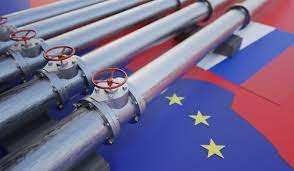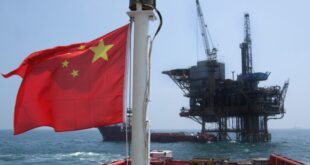Europe’s energy efficiency plan to combat the bloc’s energy crisis and secure sufficient gas supplies ahead of the winter cannot exclude gas flow from Russia in order to fill up gas storage.
Natural gas storage has become an important tool in alleviating the energy crisis, which has escalated since the start of the war between Ukraine and Russia.
Storage facilities, which are filled in the summer months when prices are relatively low, are used in the winter when demand is high. They play a role in not only the security of supply but in offering flexibility to the European gas system.
The EU’s current gas storage capacity has reached approximately 100 billion cubic meters. The continent purchases on average 155 billion cubic meters of natural gas from Russia but consumes more than 400 billion cubic meters of gas in total.
When the energy crisis began at the end of last year, gas storage levels in Europe were below the five-year average. More gas than usual was consumed in the spring and summer last year due to the higher-than-expected increase in gas demand and weather-related factors.
The EU, as a whole, plans to replenish 80% of its storage capacity by Nov. 1 to counteract deficiencies during the peak winter months. Germany’s target for the end of November has been set at 95%.
However, the decrease in the flow from the Nord Stream 1 natural gas pipeline to 20% with the backdrop of the “energy game” between the EU and Russia is affecting the filling rate of gas at storage facilities.
The current occupancy rate in European warehouses stands at a mere 66%, undermined by high natural gas prices due to the energy crisis.
The storage occupancy rate in Germany, which has one of the highest among EU member states, is calculated at 66.4%. France and Italy are further ahead with occupancy rates of 75% and 70%, respectively, followed by the Netherlands at 63%.
Gas flow through alternative pipeline routes via Ukraine has also dropped drastically since the start of the war with Russia, and the storage capacity in Ukraine has a low occupancy rate of 22.9%.
Storage problems are still prevalent despite low consumption rates in small European countries. The occupancy rate in Bulgaria is 44%, 48% in Croatia, 49% in Hungary, and 55% in Romania.
The EU, as part of its emergency energy plan, had agreed Tuesday to reduce gas consumption by 15% to alleviate the risk of having reductions or a complete halt to supplies via the Nord Stream 1 from Russia to Europe.
Although Germany is largely dependent on Russian gas, Austria, along with other Eastern European countries, is among the major consumers of Russian resources.
The halt in supplies via Nord Stream due to turbine maintenance in Canada is a legitimate fear for Europe, as Russia had previously cut off gas flow to Bulgaria, Denmark, and Finland for their refusal to pay in rubles for supplies from Russia, which it requested.
Experts concede that it would be easy for Russia to find grounds to cut supplies. However, in the event of a complete cessation of gas flow in the autumn amid a potentially enlarged energy crisis, Russia would be in danger of losing its share of the European gas market, depriving the country of much-needed income.
According to experts, it seems more likely that Russia will keep the gas flow to less than sufficient levels to maintain pressure on Brussels and hold gas prices at crisis levels while concealing the threat of cutting off the gas completely for the winter.

 Iran Energy News Oil, Gas, Petrochemical and Energy Field Specialized Channel
Iran Energy News Oil, Gas, Petrochemical and Energy Field Specialized Channel



